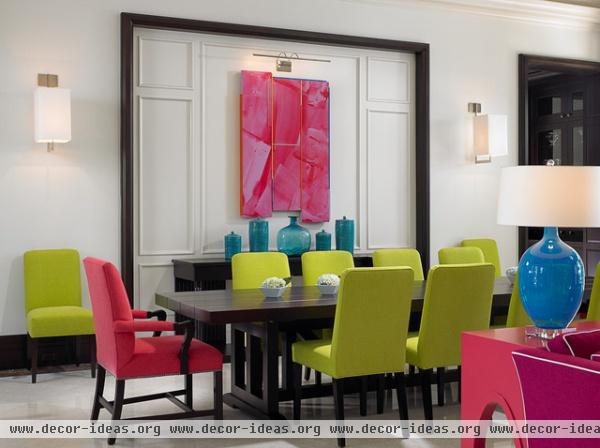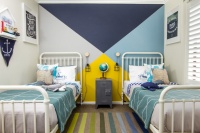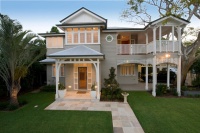Bold Decorating: Be a Color Block Connoisseur
http://decor-ideas.org 07/21/2013 17:20 Decor Ideas
Bold colors are a great way of expressing yourself. But figuring out the right palette isn't easy. Color blocking can help simplify the process. This design technique involves using no more than three solid, contrasting colors in one space. This narrows down your color choices and gives your home a vibrant, high-energy feeling compared to the vibe of more muted, tonal hues.
If you are ready for a dynamic change, these color blocking ideas can introduce you to a bolder lifestyle.

This design technique is firmly rooted in fashion. In the 1960s British and other European fashion designers took two or three solid colors and blocked them together on one outfit.
Color blocking eventually ran its course, but it reemerged a few years ago — and not just in fashion. Many of today's interiors use bold color blocking to create visually mesmerizing rooms.

Basic color blocking. With color blocking for interiors, two or more solid colors are used in a single room. Traditionally, color blocking uses either all primary colors or all secondary colors. However, today's designs certainly mix it up.
Tip: Invest in a good color wheel that visually illustrates the results of color mixing, defines warm and cool colors, and shows different hues, tints and tones.

Complementary color blocking. Colors that sit directly opposite one another on the color wheel get along well and will work for interiors when used correctly. The yellow-green of the chairs in this room beautifully complements the red-purple of the painting and the sideboard, for example.
Tip: Pair colors of similar intensity. If your primary color is bold, make sure all the other colors are just as bold. If your primary color is pastel, make sure all the other colors are also pastel.

Monochromatic color blocking. Monochromatic color blocking essentially uses one color in varying degrees of tone, shade, tint and value. Introduce a variety of textures and materials in the room to help create interest.
Tip: A rug with just one bold color and a graphic pattern makes a confident statement in a contemporary setting, as shown here.

Analogous color blocking. Using colors that are next to each other (analogous) on the color wheel produces a smooth and soothing interior scheme. This green wall harmonizes perfectly with the blue sideboard and purple upholstery.
Tip: Pick one color as the primary color and use two others for elements that pop.

Neutral color blocking. White and black are generally classified as neutrals. Their huge contrast creates a stunning color block. This thoroughly modern, clean and sophisticated kitchen uses just the right amount of both.
Tip: When working with a black and white palette, try adding one other solid color with accessories or appliances to give the room a visual spike.

Color blocking with accessories. If you would prefer to keep your walls neutral, try grouping your accessories in color blocks for a less permanent pop. Groups of vases or framed pictures in the same solid color are an easy way to liven up a bland room.
More: 11 Top Home Decorating Colors and How to Use Them
Related Articles Recommended












